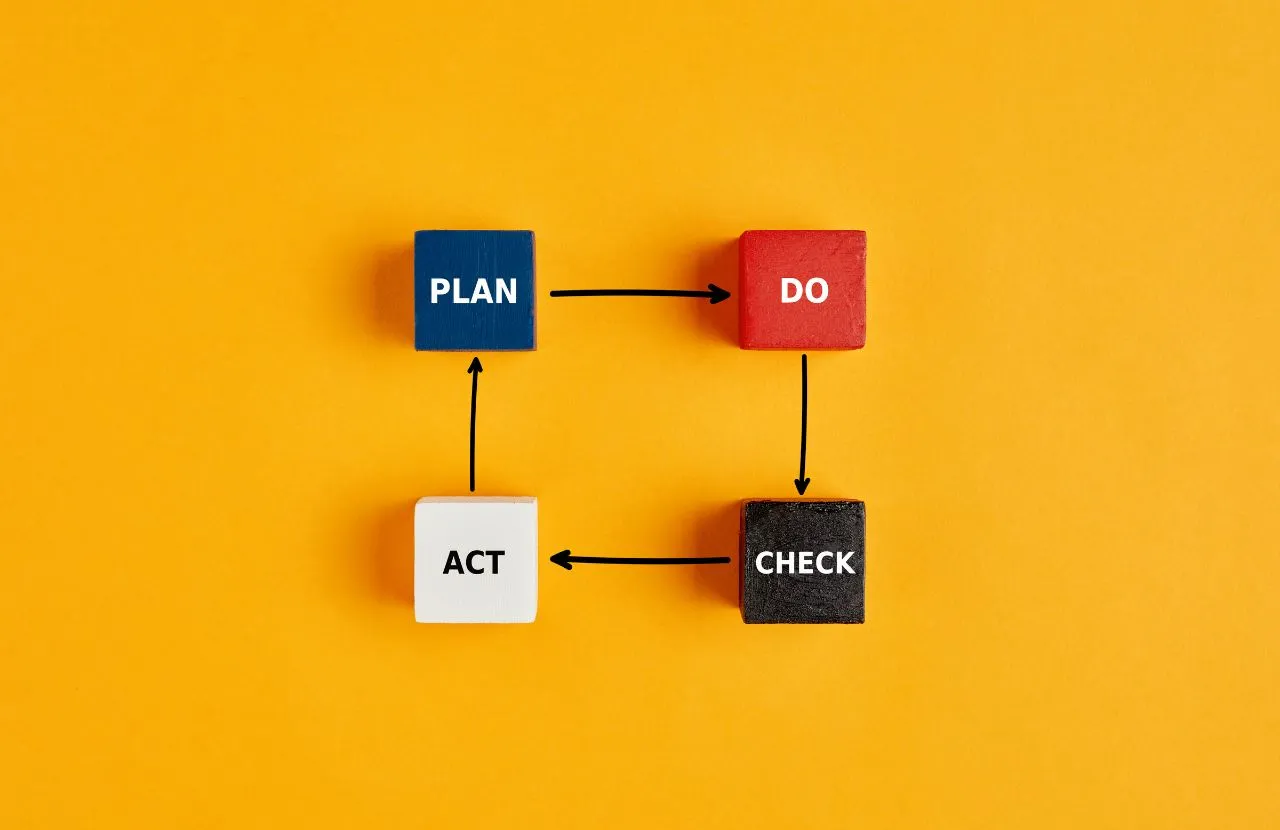1. The PDCA cycle
PDCA cycle (The Plan-Do-Check-Act) is a circle rather than an end-to-end process. In most case the aim of implementing the PDCA cycle is to improve ongoing processes or implementing processes to bring growth. It is an iterative method for continual improvement of processes, products.
2. Use the PDCA cycle when
- Starting a new improvement project in the organisation.
- Implementing any changes in the organisation toward improvement.
- Developing a new or improved design of a process, product, or service.
- Stating a repetitive work process.
- Planning data collection and analysis to verify and prioritize problems or root causes.
3. Question to consider if the organisation decides to implement the changes in full scale
- Resources needed in the organisation to implement the solution at full scale.
- Training needed to implement the proposed changes in full scale and adoption of those changes.
- How can organisation measure and track the performance of the new improved process?
- What has been learned by the organisation that can be applied to other projects?
4. Steps to follow when implementing the PDCA
P – Plan: during the planning phase the organization should answer the following questions:
- What is the core problem the organisation is intending to solve?
- What information or resources needed to fully understand the problem and its root cause?
- What information or resources the organisation have? is it feasible to solve this problem?
- What are other viable solutions currently available?
- How is the organisation going to measures its success?
- How will the outcome or results be collected for success measuring purpose?
D – Do: This step means the Implementation and controlling of what the organisation has planned
- The focus will be on incremental changes that improve the process, preferably in a controlled environment.
- Organizations might opt to test the new solutions on one team or within a certain demographic. Evaluate the results without interrupting the rest of the operation.
C Check: This step is about monitoring and measuring the processes and results against policies, objectives and requirements results
- Review and analyse the outcome or results.
- Revise the plans as necessary.
- Check if the plan has worked? If so, were there any hitches in the process?
- What steps could be taken to improve or to eliminate future repetitions?
- Results to guide decisions on the next step,
A – Act: This step involves actions to be taken to improve the performance of processes
If all went according to plan, organizations could now implement its tried-and-tested plan.


